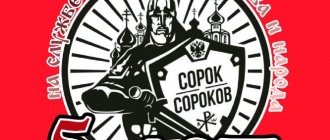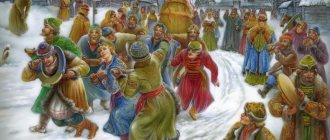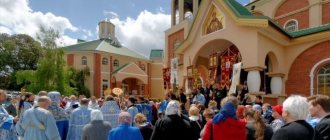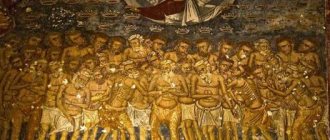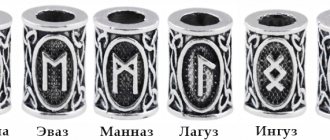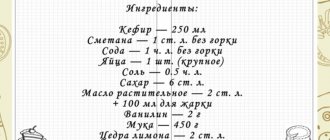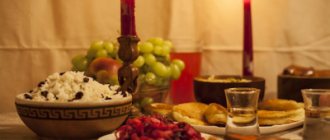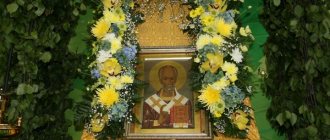Slavic Holiday Maslenitsa (Komoeditsa, Krasnaya Gorka, Krasnogor) - day of spring equinox. This is one of the four main holidays of the ancient Slavs, dedicated to the positions of the Sun (Kolyada, Maslenitsa, Kupala, Radogoshch). The date of the vernal equinox falls from March 19 to March 25. Maslenitsa is a cheerful pagan holiday of farewell to winter, with joyful anticipation of spring warmth and renewal of Mother Nature. This is a natural phenomenon that our Ancestors simply could not ignore. Until now, we associate spring with rebirth and renewal, on all planes, physical and energetic. Therefore, this ritual is accompanied by: fist fights, delicious pancakes, round dances, sleigh rides, brave games and the burning of an effigy of the Goddess Mara. According to tradition, straw was taken and during the Maslenitsa week the corners of the hut were swept with it every day. Then they made a scarecrow from this straw and burned all the negativity.
Maslenitsa is a holiday from pagan times. What is its essence?
Let those who, smacking their lips and wiping their greasy fingers with relish, forgive me, are going to eat round, fragrant, delicious pancakes on this Maslenitsa holiday, as a symbol of the Young Sun. May those who glorify the holiday of Komoeditsa at the beginning of March forgive me. I will ask forgiveness from those who at this time, with fun games and round dances, are accustomed to burning an effigy of Winter, thinking that this is the wonderful Maslenitsa, that this should be the scenario of a traditional Slavic holiday.
I don’t apologize to those who, without making much sense, just walk around in a crowd and fry homemade pancakes. I will ask forgiveness from everyone who had fun, feasted, thinking that they were celebrating the Great Slavic Meeting of Spring. Because I'm going to ruin this holiday for you. This cheerful eating of pancakes in honor of March is not at all the Slavic holiday of welcoming spring!
What should those who want to preserve the traditions of the pagan holiday, the ancient triumph of life over death, do? That's what we'll talk about today.
Noisy Maslenitsa, the scenario of which is widespread now, is not a Slavic holiday
Here we explain the traditional ritual addressed to the Solar God-Governor. The ritual is done using structured water, which becomes “holy” (pure) on certain days of the year. The peculiarity of this ritual: the Sun sends rays of male power, the Moon - waning.
- If you need:
- step-by-step description of how to do this;
- a table with the dates of the best days of this rite;
- texts of conspiracies in pdf, epub, fb2 formats.
Buy a step-by-step ritual
***
The Lord created man and invested in him the gift of creativity. It is natural for a person to feel this need within himself - to create. Man realized his creative abilities already in paradise, when, according to God’s command, he cultivated paradise and gave names to animals. The ability to create was not lost by man even after the Fall. However, it also turned out to be infected with the poison of sin, so even a person’s good undertakings can be distorted and disfigured.
Just as an individual person has creative abilities, so does an individual people, constituting a single organism, not lack it. It is from the implementation of folk art that this or that culture is formed, feeding on the juice of the tradition passed on from generation to generation. That is why it is so important to observe traditions and, most importantly, to understand them, because in a world of sin it is easy to pervert good origins. Let us remember the story of the exodus of the Jews from Egypt. It would seem that everyone knew who freed the people of Israel from slavery and did not let them perish, but as soon as Moses stayed on the mountain for only forty days, the most important thing was distorted - they tried to replace God with an idol. “When the people saw that Moses did not come down from the mountain for a long time, they gathered to Aaron and said to him: Arise and make us a god who would go before us, for with this man, with Moses, who brought us out of the land of Egypt, we do not know what happened. And Aaron said to them: Take out the gold earrings that are in the ears of your wives, your sons and your daughters, and bring them to me. And all the people took the gold earrings out of their ears and brought them to Aaron. He took them from their hands, and made a molten calf out of them, and dressed it with a chisel. And they said, Behold your God, O Israel, who brought you out of the land of Egypt! When Aaron saw this, he set up an altar before him, and Aaron proclaimed, saying, “Tomorrow is a feast for the Lord.”[1]
If the truth can be distorted in just forty days, then what can we say about traditions that have been distorted over a centuries-long period of time? It often happens that they celebrate this or that holiday, which has existed among the people for a long time, but they no longer remember its roots, they do not understand its essence. This is sad. And this is even scary, because it is just as if a person drank water and was unable to understand from what source it was taken - from a well of living water or from a dirty puddle.
This happens with many traditions of our people. A person considers himself a Christian - and celebrates pagan holidays, thinking that he supports Christian traditions. It also happens, on the contrary, that he rejects a custom that has Christian origins, being convinced that he is fighting paganism.
One of the most difficult holidays in this regard is Maslenitsa. What is this – the remnants of paganism, dressed up in Christian clothes, or a common Christian worldview, stained with sinful blots? Let's try to figure it out.
To do this, let us focus our attention on Lent.
Firstly, let us remember that long before fasting we already feel its “breath”. Three weeks before it begins, the Lenten Triodion opens, “Open the doors of repentance for me...” is heard for the first time, and the Gospel parable of the publican and the Pharisee is read - this is how the Church begins to prepare us for the penitential days of fasting. At the next Sunday service, the sad singing of Psalm 136 “On the rivers of Babylon...” is added and the parable of the prodigal son is remembered. Another week later we hear menacing words about the Last Judgment. And the resurrection just before Lent is called the Remembrance of Adam’s Exile (otherwise known as the Forgiven Resurrection). Then follows the Great Lent itself, distinguished by its duration and severity, all filled with a feeling of repentance and, at the same time, anticipation of the bright and joyful Resurrection of Christ. Finally, Holy Week comes, in which we suffer and die together with Christ, followed by Easter rejoicing: “Christ is risen from the dead, trampling down death by death!”
Thus, three periods appear before us: 1) pre-Lent, 2) fast and 3) Easter. Theologically, this can be interpreted as follows. Lent is the life of humanity on earth after the Fall. Accordingly, before that, life took place in paradise, which, on the one hand, was not yet burdened with bitter crying and man was still free in his affairs, and on the other, already had a taste of the impending fall - hence the first notes of repentance in the service. And so, the Fall took place. Man was given freedom (cheese week) and he could not bear it with dignity. There comes the expulsion of man from paradise (Forgiveness Resurrection) and subsequent sorrow, hardship and repentance of our sin-filled life (Lent). But Christ came, died for us (Holy Week), rose again and gave us eternal life (Easter). As a result, the path from the pre-Lent days through fasting to the Easter celebration means the path from Adam to Christ.
First and most important: when will the Maslenitsa holiday take place?
Do you remember when Maslenitsa is this year? On what dates was it celebrated a year ago? For some reason, the dates of spring change from year to year and often do not coincide not only with natural spring, but also with the calendar spring.
What is now called the Maslenitsa holiday is a big lie. The festivities started before Lent, which precedes Easter, are a forced, crooked, like any half-truth, attempt to combine ancient paganism and Christianity.
Back in the fifteenth century, in accordance with their natural calendar, the Slavs celebrated the arrival of Spring on the day of the Vernal Equinox. According to the new style, this time falls on March 20–21. When the sun rises high enough to look through the small window of the wooden hut, it is time for pagan Maslenitsa.
It was a real Maslenitsa holiday, the Slavic holiday of meeting the Spring Sun. It was celebrated many, many, many times. From century to century, it was from the moment of the Equinox that people considered spring to come into its own. The holiday was calculated by the Solar Whirl, the day when Mother Earth woke up, when the young and fiery Yarilo-Sun descended to her, was a real Slavic holiday of Spring. This is the day when some Gods came to the world of Reveal, while others left it. Perhaps Morena-Winter is leaving us with regret, but this is her lot - to leave the world of people in the spring, to lose her power in order to return it to the next winter.
What is the attitude of the Christian world to Maslenitsa?
According to Orthodox tradition, the holiday of Maslenitsa is not included in the church calendar as an event. Instead, the concepts of Cheese Week (Sunday) and Cheese Week (week) were introduced.
They have a different meaning, different from folk, especially pagan, Maslenitsa. Raw Week is also called Forgiveness Sunday. She ends a three-week period of preparation for Lent, setting her faithful on a necessary spiritual note.
It is clear that changes in the soul cannot be accomplished in a few dozen days. At this time, the Church, as a community of all living and departed Christians, devotes a person to inner attention to his thoughts and deeds. This is a period of repentance and humility. Through physical and spiritual limitation and prayer, the believer ascends to the contemplation of Divine revelations. Cheese Week has become one of these types of physical humility of one’s flesh. Meat was not allowed to be consumed throughout the week. All weddings were also cancelled. But no one forbade the joy of communication and fun. The main thing is to observe moderation, decency and remember that Lent is coming soon.
The Christian view of the material world does not accept the pagan ideas embedded in the ritual essence of Maslenitsa. The Orthodox faith rejects such views of polytheists as:
- cyclicality of time (this is a linear characteristic, as science also speaks about);
- animation of material nature;
- sacralization of custom and idolatry;
- orgies and fist fights.
The Church has a particularly negative attitude towards human sacrifice. Today this phenomenon is absent, but the idea itself is not dead yet.
Orthodoxy, meanwhile, does not cancel the national flavor that is inherent in Maslenitsa. If it is carried out in the spirit of kindness, respect and love, then there is nothing wrong with it. This Slavic heritage is now sanctified with true meaning and new ideas of resurrection and eternal life. After all, the Christian view is a worldview of transformation, which cleanses sinful dirt and points to the right path. Maslenitsa is a pagan holiday, but now it has become a week of relaxation and fun, without any sacred meaning. The main thing is that the custom unites people, and not divides them into confessions and other parties. At this time, the Church advises visiting all the sick and suffering so that they can also feel the atmosphere of the holiday.
Maslenitsa among the Slavs is a holiday that begins with a wake.
Remember the Slavic Veles Day, the holiday of the God of Wisdom and Witchcraft, which was on February 11? At this time, the Goddess of Fate, the Great Makosh, arranges a trial of Morena, the Goddess of Winter and Death, and overthrows her power.
Now remember why the fortieth day of death is celebrated. Forty is one of the three numbers known to the Slavs that have a sacred meaning. The Slavs remembered that the Soul reaches Navi, the Abode of the Dead, forty days after death.
So, exactly forty days from February 11, precisely on the day of the spring equinox or immediately after it, March 22, Veles, the Ruler of the Three Worlds, celebrates a symbolic commemoration for Morena, who went to Nav until the next cold weather. This is what burning an effigy of Morena-Mara is. This is an ancient fire ritual that was adopted among the Slavs in relation to the dead. This is what Maslenitsa is. Did you know about this when you set fire to the straw doll? After all, such knowledge gives meaning to all actions. Otherwise, the sacred action turns into a simple “party”!
If you understand the background of this ritual, then it even becomes clear why the Maslenitsa holiday is called Komoeditsa. Not at all because “the first pancake was lumpy.” Because the Great Veles, possessing the ability to shapeshift, most often liked to come to holidays in the form of a bear, that is, a “coma”. The first pancake was given to the bear, and the proverb acquires a sacred meaning only in its original form: “the first pancake is given to someone (the bear).” So the holiday is called Komoeditsa.
Pancakes, in fact, have always been a dish that was eaten at funerals, this is a ritual funeral treat among the Slavs.
To be fair, it must be said that the attitude towards the mystery of death that the Slavs historically showed was surprisingly bright. Similar to what Buddhists believe now. That is, it was believed that the Soul, having been purified in Navi, returns to Reality for a new circle of improvement. So the wake of Morena was a very cheerful Slavic holiday.
The Maslenitsa holiday has its own sacred meaning.
Maslenitsa traditions
The custom of eating dairy products and pancakes on holiday has its roots. The reason for such attention to sour cream, cottage cheese and butter is the first calving of cows after a long and cold winter. In the old days, these dishes were truly a real gift to the table, because supermarkets did not exist then. Poor people saw practically no meat, and milk was a strong help as a source of protein. The celebration was also called Masnitsa or Pancake Day.
Another tradition during the Maslenitsa period was the holding of engagements, which is why it was called Babskaya Week (typical for the territory of modern Belarus and Ukraine). Before Christianity, marriages took place at this time. After the baptism of Rus', the engaged young people waited until the end of Lent and then got married. That is, a parallel can be drawn between the cult of fertility, chastity, femininity and motherhood.
Not all customs were strict, with a sacred meaning; fun activities were also welcomed. For example, a son-in-law invited his mother-in-law to his house on Friday and treated her generously so that she would eat and drink more, but remain silent. This was a hint at the long “mother-in-law” tongue. In Ukraine and Belarus, girls led a “block” life. They took a block, dressed it up as a person and tied it to single guys and unmarried girls. Those who did not want such a couple were paid off with food, drink or gifts.
Food has always been an important factor in the life of pagans, as evidenced by the origin of traditional pancakes. According to one version, this is a symbol of the sun, according to another, it is funeral bread, which was used to treat the poor on the first day of Maslenitsa so that they would remember their ancestors. They said that the first pancake is for the peace. Fist fights or the siege of a snowy city have also become an integral tradition of Maslenitsa. They have their own history. The fact is that the shed blood was a sacrifice to the gods and dead spirits. In the old days, this was a very dangerous event, although there was no intention of purposefully killing anyone, but in the heat of battle this happened. With the advent of Christianity, local priests fought to the best of their ability against such manifestations of aggression.
Why Maslenitsa lasts more than one day
Because in fact these are two Slavic holidays. Following the Maslenitsa holiday, farewell to Winter, the holiday of welcoming Spring begins, consisting of the Invocation of Spring-Lelya and the arrival of Yarilo-Sun.
Slavic holidays are a time of unity with nature, and not “weekends sent down from above.” Four main Slavic holidays: winter Solstice (feast of Kolyada, the God of the young Sun), spring equinox (feast of Yarila, God of Passion and Fertility), summer Solstice (feast of Kupalo, God of the summer Sun), autumn equinox (feast of Avsenya-Svyatovit, God the Pioneer ).
The Maslenitsa holiday lasts several days, because these are two Slavic holidays
***
Therefore, yes, you can find elements of paganism in the celebration of Maslenitsa. However, most of them are essentially a common manifestation of the sin of the “old man,” regardless of his religious affiliation, and the other is truly a legacy of paganism, which can be seen, in particular, in some songs of clearly pagan content. The essence of Maslenitsa, it seems, is still Christian [16]. You can reject the people's vision, which, indeed, very, very often is quite free in dogmatic terms, you can not accept the people's experience of Christian events presented in this way, but why call this worldview of the people what it is not - paganism? And our task is precisely to separate the wheat from the chaff, in order to prevent the weeds from destroying the good seed of the Christian tradition. If this is not done in our time, when after almost a century of obscurantism the continuity of generations has been thoroughly destroyed, when the cultural traditions of the people have been lost and distorted and continue to be lost and distorted, the “Europeanization” and secularization of our country is underway - if this is not done now, then we will our children will be overwhelmed by such a wave of lack of spirituality and pseudo-spirituality that we will no longer be able to cope with.
Dmitry Kuligin
, priest
Magazine "Church Bulletin", St. Petersburg, No. 1-2, 2004
Feast of the Invocation of Spring-Lelya and the coming of Yarilo-Sun
After the commemoration of Mary Morena, which lasted a week until the spring equinox, and was previously called the Komoeditsa holiday, and now the Maslenitsa holiday, a week of Slavic holiday began, marking the arrival of Spring.
In honor of Spring-Lelya, the tree is decorated with ribbons, and when it comes around, they call out Spring Beauty, the sister of Morena, the Goddess of Winter. Where Lelya is, there is Yarilo, what a beautiful couple! The tree was planted on an elevated place, usually called Yarilin’s bald patch. They prepared the place carefully, removed the snow, and trampled it down to a level surface. People call Lelya and Yarilo, organize celebrations with songs and round dances, bake Easter cakes, bagels, gingerbread larks and cookies reminiscent of the sun, and light bonfires.
The Slavic holiday of Spring and Love marked the turn of nature towards summer, the completion of another circle of Life.
There is a lot to talk about the holiday itself! Maslenitsa is so important that one article here is not enough. Therefore, read more about how the spring meeting itself took place.
After Maslenitsa, the week of the Slavic holiday began, marking the arrival of spring.
Traditional Maslenitsa rituals (fun)
Sledging. The horses were harnessed to painted sleighs, covered with a carpet or bearskin, and decorated with colored ribbons, bells and bells. Bells and bells rang festively, harnessed sleighs with dressed people rushed merrily along the streets of cities and villages.
Skiing from the icy mountains. At first, natural terrain was used to create ice slides - hillocks, river banks, ravines that were filled with water. Later, wooden slides began to be built in the central squares of cities, and special sleds in the form of a boat on runners were invented.
In the market squares, near the ice slides, a fair was unfolding, with hot tea from samovars, pies and pancakes being sold.
A booth (theater) was located right there the gathered people were amused by buffoons.
Taking the snowy town . People built a snow fortress town with towers and gates out of snow. The participants in the future battle were divided into two groups. One group besieged the fortress, and its defenders fought back with snowballs. Such snow battles were also fun.
Fist fights . On the last day of Maslenitsa, people gathered in the market square to watch and take part in wall-to-wall fist fights. First, the participants were divided into two groups and faced each other. And the battles ended with everyone fighting in one heap, not distinguishing either relatives or friends.
Pancakes are the main attribute of Maslenitsa. Round and hot, they represent the symbol of the Sun. Pancakes were baked and eaten in large quantities during Maslenitsa week.
The pancakes left after the holiday were given to beggars or domestic animals.
On the last day of Maslenitsa week (on the eve of the spring equinox), the ritual funeral of Maslenitsa-winter was held. In cities and villages, with songs and sentences, a cheerful procession of mummers walked through the streets with a straw effigy of Maslenitsa, which was honored and invited to return next year, and then taken out of the outskirts and burned on a ritual bonfire. At the same time they called for Spring.
The ceremony was performed on a hill (on a hill).
In some areas, the Maslenitsa effigy was not burned, but torn into pieces and scattered across the fields for a good harvest.
The children also celebrated Maslenitsa . They made a Maslenitsa doll from straw or thin twigs. Multi-colored pieces of fabric and ribbons were tied onto the doll's head. On the last day of Maslenitsa, this doll was thrown into the fire, on which adults burned a large effigy of Maslenitsa.
In addition, the children blew clay whistles , whose sound resembled the singing of birds - this is also a rite of invocation of Spring. Such clay whistles are still sold at Maslenitsa fairs.
Shrovetide
Throughout Shrovetide week, people celebrated, had fun, and treated themselves to pancakes and other delicacies. On each day of the week, it was customary to perform certain actions: go on a visit, ride a sleigh, and at the end, solemnly burn an effigy of the patroness of darkness and cold, Mary-Marena.
It was believed that anyone who spent a boring week during the oil season was doomed to a sad vegetation throughout the next year.
Monday meeting
The first three days of Maslenitsa week were called “Narrow Maslenitsa”. At this time, people were still allowed to work: they filled the slides for skating, and made a scarecrow to burn on the last day of the holiday.
Pancakes were baked everywhere, and sweets and other treats were sold at fairs. We went to visit each other. Parents were especially revered on the husband's side. Children walked from house to house singing songs. For this they were given pancakes and sweet gifts.
Children on sleds were the first to slide down the roller coaster. Adults started skating later .
Tuesday-flirt
On the second day of Maslenitsa, the fun became more widespread. Youth groups and young married couples were sliding down the icy slides. Snow fortresses were built where entire battles were fought.
Groups of mummers walked the streets, performing simple scenes with a bear. Sleigh rides were popular.
On this day, unmarried youth were looking for a mate. Matchmaking took place. Moreover, many tried to do this in time during Shrovetide week, because marriage agreements were not concluded during Lent.
Wednesday is a gourmet
Starting Wednesday, shops began to open on the streets and squares, selling various treats: pancakes, sweets, pastries, hot tea and sbiten. Together with the whole family, the sons-in-law went to visit their mother-in-law. She had to set the table and feed the guests to their fullest.
Scenes were played out on the streets, the main character of which was the mother-in-law. The skits are humorous, with songs, jokes and cheerful music.
Thursday - go wild
Wide Maslenitsa began on Thursday. Household work stopped and public festivities began. These included: mummers' walks, snow battles near towns made of snow and ice, wall-to-wall fist fights.
They lit large fires, around which they danced round dances in a salting direction, that is, in a clockwise direction. The girls called for the arrival of spring with songs. The made effigy was lifted up the mountain.
Children and youth walked around courtyards and houses with carols. They were treated to sweets and the inevitable pancakes. The newlyweds rode around in painted sleighs among the guests and rode down the slides.
Friday-mother-in-law evenings
On Friday, mothers-in-law paid return visits to their sons-in-law. The father-in-law sent a bag of flour and butter, and the mother-in-law sent everything necessary for making pancakes: a tub of dough, a cauldron or baking pans.
This day was not officially considered a day off, but on Friday shops and offices did not work, and children did not study.
Saturday - sister-in-law's get-togethers
On Saturday, wives were supposed to invite their husband's sisters and their families to visit. A sumptuous meal was being prepared, again with pancakes and all kinds of sweets. Even pets got pancakes. According to custom, the cattle are not transferred.
They commemorated the dead by visiting the churchyard.
Forgiveness Sunday
On Sunday the holiday ended. Everyone visited each other and asked for forgiveness for the insults and troubles they had caused. And they received it, of course.
On this day, an effigy of the mistress of darkness and cold, Mary-Marena, was solemnly burned. The remains of festive food were also thrown into the fire as sacrificial demands. The ashes from the fire were scattered over the arable land. The more ash, the more fertile the year will be.
Traditional holiday elements
Maslenitsa is a holiday for all Slavs. Depending on the territory of residence, they introduced certain features.
Clothes (costumes)
On the territory of modern Russia, for the holiday, men wore red shirts, the edges of which were decorated with braid and embroidery. Since she did not tuck herself in, they belted her with a sash. A pointed hat with longitudinal slits fastened with small buttons was often worn on the head. There are boots on the feet, and a sheepskin coat as outerwear. Women's costume included:
- flared sundress;
- white shirt;
- handkerchief;
- warmer.
In Ukraine they dressed differently. The women's outfit consisted of a long embroidered shirt, over which a scarf was worn. Men also wore embroidered shirts. Another common item is the kiptarik or warm vest.
Meals, drinks and other treats
In Belarus, in addition to traditional pancakes, people were treated to pryentsy (fried potato pies), kopty made from grated potatoes, sorcerers, potato pancakes and sbiten. In Russia, the menu looked different and included kulebyaki, pies with fish, cheesecakes, and pancakes. In Ukraine, it is customary to prepare “empty” jellied meat from pork legs, dumplings with cottage cheese, cabbage with butter, kapusnyak, and porridge.
Games, fun and entertainment
With the onset of Broad Maslenitsa, mass celebrations began. My favorites are horse riding, fist fights, and creating snow forts. The ice slides were always filled, which was fun not only for children, but also for adults.
Tuesday – Flirting, March 9, 2021
The name speaks for itself: the festivities began on Tuesday. For example, people rode down slides, on sleighs and on carousels. By the way, the day was special for single people. Men picked out potential brides for themselves, flirted with them (Flirting!) and went to bridesmaids. So that already on Krasnaya Gorka (after Lent - it ends on May 1) it would be possible to have a wedding. Apparently, now this custom may well be replaced by dating apps. Well, what – traditions must be honored somehow.
And, of course, they baked pancakes that day too.
How to eat pancakes on Maslenitsa
The etiquette norms of Ancient Rus' differ from the way well-mannered people are accustomed to behave at the table today. We rarely eat with our hands and use cutlery more often. That’s why many people eat pancakes on Maslenitsa armed with a knife and fork. According to ancient beliefs, you need to eat Maslenitsa pancakes with your hands, and using knives and forks will bring disaster to the eater.
Today, the tradition of eating the main Maslenitsa dish with hands is supported by an increasing number of people. More often, Maslenitsa is celebrated with family or warm company during folk festivals. Maslenitsa towns line the streets with pancake baking, hot tea, coffee and various additives.
